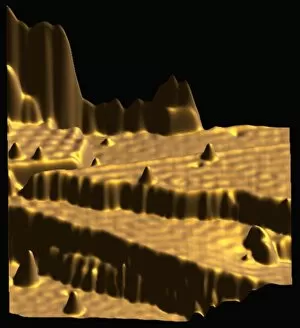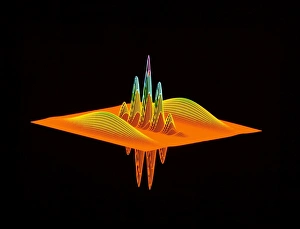Decoherence Collection
Decoherence, a phenomenon at the forefront of spintronics research and scanning tunneling microscopy (STM), is revolutionizing our understanding of quantum systems
All Professionally Made to Order for Quick Shipping
Decoherence, a phenomenon at the forefront of spintronics research and scanning tunneling microscopy (STM), is revolutionizing our understanding of quantum systems. In this captivating field, scientists delve into the intricate interplay between particles' spins and their environment, unraveling the delicate balance that dictates coherence. Spintronics research has paved the way for groundbreaking technological advancements by harnessing electron spins rather than their charges. By manipulating these tiny magnetic moments, scientists aim to create ultra-efficient electronic devices with enhanced functionality and reduced energy consumption. Within this realm of exploration lies STM, a powerful tool enabling researchers to visualize individual atoms on surfaces with unprecedented precision. It allows us to peer into the quantum world, observing how electrons navigate through materials and interact with their surroundings. However, decoherence poses a significant challenge in both spintronics research and STM experiments. As particles interact with their environment—be it vibrations or electromagnetic fields—their fragile quantum states become entangled with external factors. This entanglement disrupts coherence, leading to loss of information crucial for precise control over electron spins or accurate measurements using STM. Understanding decoherence is vital for overcoming its detrimental effects on emerging technologies like quantum computing and high-density data storage. Scientists strive to identify strategies that mitigate decoherence by isolating particles from environmental disturbances or engineering materials that exhibit robust coherence properties. Moreover, studying decoherence sheds light on fundamental questions about the boundary between classical physics and quantum mechanics. It challenges our perception of reality as we explore why macroscopic objects do not typically display coherent behavior while microscopic entities can exist in superposition states—a hallmark characteristic of quantum systems. Intriguingly, recent advances have shown promise in taming decoherence through innovative techniques such as dynamical decoupling or error correction codes. These approaches offer glimpses into a future where we can manipulate complex quantum systems without succumbing to disruptive influences from the surrounding world. As our understanding deepens and technology advances, the quest to conquer decoherence continues.


